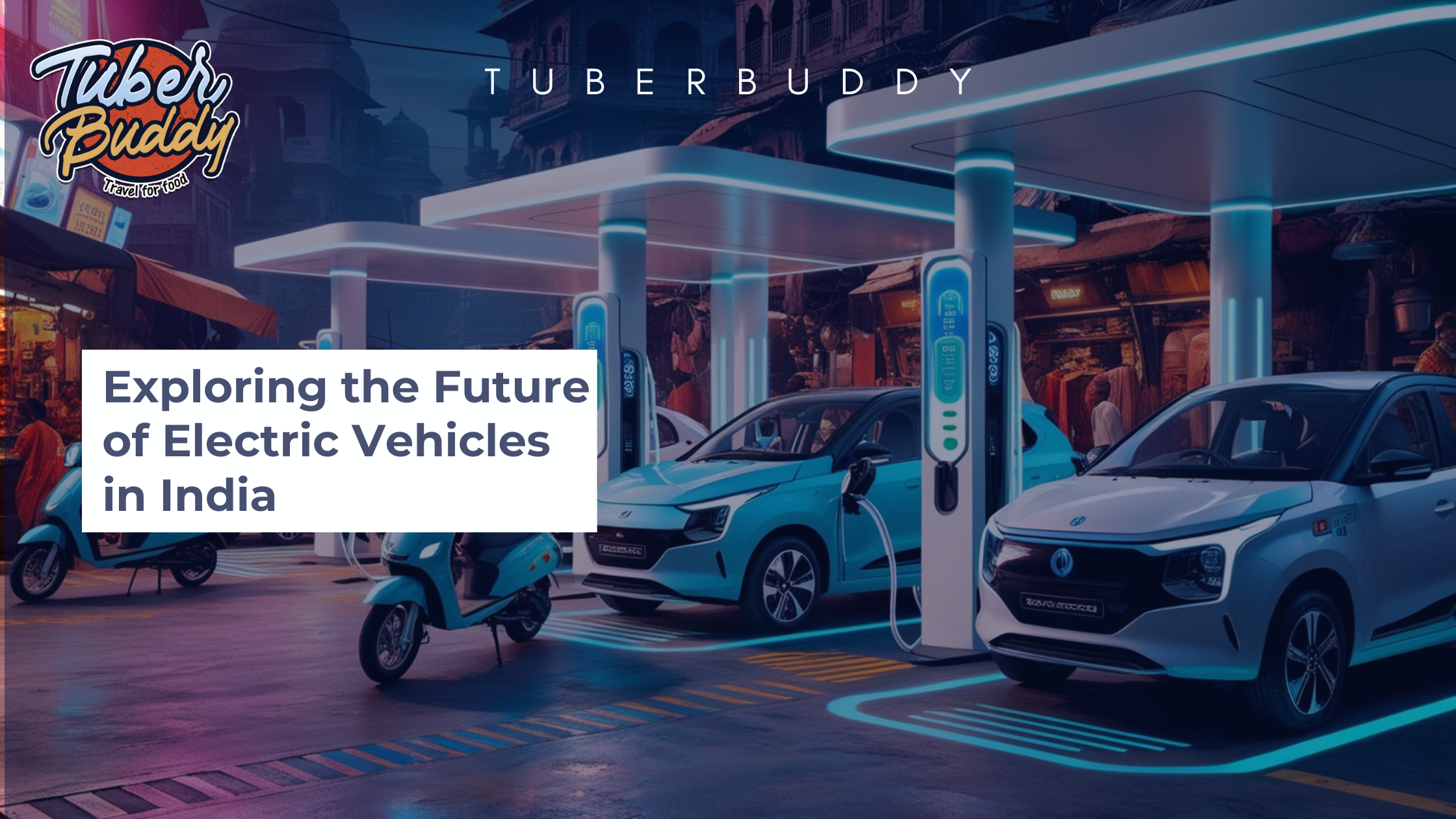Exploring the Future of Electric Vehicles in India

Electric Vehicles (EVs) are no longer just a futuristic concept; they are becoming an integral part of India’s transportation landscape. With growing environmental concerns, government initiatives, and technological advancements, EVs are poised to revolutionize the way India commutes. This shift is not only about adopting greener alternatives but also about transforming the economy and lifestyle of millions.
In this blog, we’ll explore the current scenario, future prospects, and challenges of electric vehicles in India.
The Current State of EVs in India
India’s journey toward EV adoption is steadily gaining momentum. The government’s Faster Adoption and Manufacturing of Hybrid and Electric Vehicles (FAME) initiative has played a pivotal role in promoting EVs. Under this scheme, subsidies for manufacturers and buyers have made electric cars, bikes, and buses more accessible.
Major automakers like Tata Motors, Mahindra, and Hero Electric are already leading the charge, while global giants like Tesla and BYD are eyeing the Indian market. Today, affordable models such as the Tata Nexon EV and Ola S1 scooter have made EVs an appealing choice for consumers.
The rise of EV charging infrastructure is also noteworthy. Cities like Delhi, Bengaluru, and Mumbai are seeing an increasing number of public charging stations, making EVs a practical option for urban dwellers.
Why EVs Are the Future in India
Environmental Necessity
India is grappling with severe air pollution, and EVs offer a clean alternative to traditional fuel vehicles. The adoption of EVs is critical to achieving India’s commitment to the Paris Agreement, aiming to reduce carbon emissions by 33-35% by 2030.Economic Opportunities
Transitioning to EVs will create opportunities for local manufacturing and employment. The production of batteries, charging equipment, and vehicle components can give a significant boost to India’s economy.Rising Fuel Costs
With fluctuating petrol and diesel prices, EVs provide a cost-effective solution for consumers. The operating cost of an EV is substantially lower, with electricity being cheaper than fossil fuels.Government Policies
The government has set ambitious goals to make EVs account for 30% of vehicle sales by 2030. Policies like tax exemptions on EV purchases, reduced GST rates, and initiatives like the Production Linked Incentive (PLI) scheme are driving this growth.
Challenges on the Road to Mass EV Adoption
While the future of EVs looks promising, there are several roadblocks that need to be addressed:
High Initial Costs
EVs remain more expensive than conventional vehicles, primarily due to the cost of lithium-ion batteries. However, this is expected to change as battery technology advances and economies of scale improve.Lack of Infrastructure
The availability of charging stations is limited, especially in rural areas. Expanding this infrastructure is crucial for wider EV adoption.Battery Manufacturing Dependency
India heavily depends on imports for lithium-ion batteries, which increases costs and vulnerability to global supply chain disruptions. Investing in local battery production and exploring alternatives like solid-state batteries is necessary.Range Anxiety
Many potential buyers are concerned about the limited range of EVs compared to petrol or diesel vehicles. Continued advancements in battery technology are essential to overcome this hesitation.
Technological Innovations Driving EV Growth
Innovation is at the heart of the EV revolution in India. Companies are investing in:
- Fast-Charging Technology: Reducing charging time from hours to minutes.
- Battery Swapping: Allowing vehicles to exchange depleted batteries for fully charged ones, addressing range anxiety.
- Smart EVs: Integration of AI and IoT for better navigation, efficiency, and maintenance.
Moreover, renewable energy sources like solar and wind are being explored to power EV charging stations, ensuring that the entire EV ecosystem is truly sustainable.
Future Outlook for EVs in India
India is at the cusp of an EV revolution. By 2030, experts predict a significant increase in EV penetration across all vehicle segments, from two-wheelers to commercial trucks. Localized manufacturing and government policies will make EVs more affordable and accessible to the average Indian.
The rise of EV startups, such as Ather Energy and Ola Electric, further fuels innovation and competition in the sector. With growing consumer awareness about environmental sustainability, the demand for EVs is set to rise exponentially.
Additionally, as India strengthens its renewable energy grid, the synergy between green energy and EVs will accelerate the transition toward a sustainable future.
Conclusion
The future of electric vehicles in India is bright, with immense potential to transform the transportation and energy sectors. While challenges remain, the combined efforts of policymakers, industries, and consumers are paving the way for a cleaner, more sustainable future.
For India, EVs are not just about reducing pollution—they represent a leap toward energy independence, economic growth, and a better quality of life. As technology continues to evolve, the dream of an EV-dominated India seems closer than ever.
